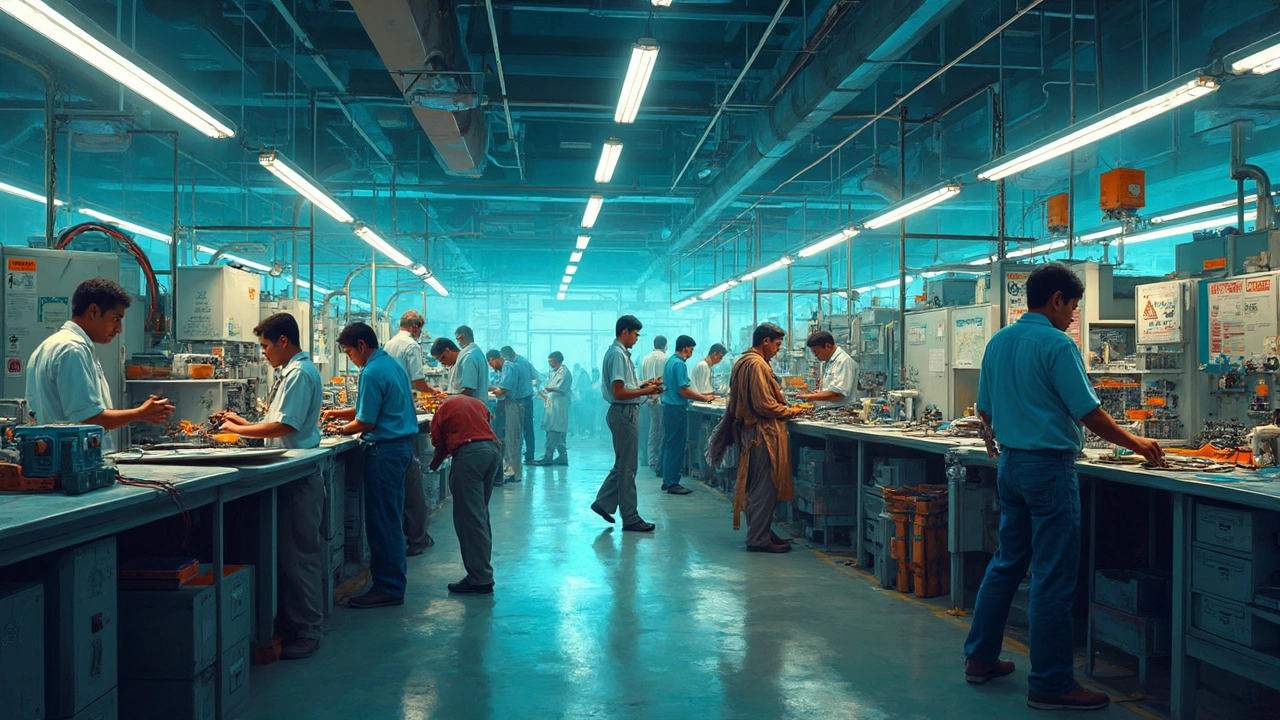India Voltage Standards – A Practical Guide for Manufacturers
India runs on a 230 volt, 50 hertz (Hz) AC power system. That means most homes, factories and offices expect that voltage level to keep lights on and machines running. If you’re bringing products into the country or designing gear for Indian customers, you have to match that standard or your product could overheat, fail, or even become a safety hazard.
Most Indian households use a single‑phase supply, while larger industrial plants often have three‑phase connections for heavy equipment like motors and compressors. The three‑phase voltage is typically 415 V line‑to‑line, which is just 230 V multiplied by the square root of three. Knowing which type of connection your end‑user needs will save you a lot of back‑and‑forth later.
Why Voltage Matters for Your Products
Getting the voltage right isn’t just a box‑checking exercise. Plugging a 120 V appliance into a 230 V socket can instantly fry the electronics. On the flip side, using a 230 V device on a 120 V system (like in the US) will make it run weakly or not at all. The same principle applies to industrial gear; a motor designed for 415 V will stall or draw too much current if you feed it 230 V.
Beyond device failure, mismatched voltage can trigger regulatory fines. India’s Bureau of Indian Standards (BIS) requires that electrical products meet IS 302‑1 for safety. Non‑compliant goods may be seized at the border, and you’ll face costly re‑testing or redesign.
Adapting Equipment to Indian Power
Here are a few quick steps to make sure your equipment plays nicely with Indian voltage:
- Check the rating label. Look for a range like “100‑240 V, 50/60 Hz.” If the label covers that range, you’re good to go.
- Use a voltage converter or transformer. For gear that only handles 120 V, a step‑down transformer (230 V → 120 V) will protect it.
- Choose the right plug type. India primarily uses Type C, D, and M plugs. Providing the correct plug or a fused adapter avoids user frustration.
- Consider three‑phase requirements. If your product needs 415 V, design it for three‑phase input or include a phase‑converter in the package.
- Test for frequency. Most Indian equipment runs at 50 Hz. Some motor‑driven devices behave differently at 60 Hz, so verify performance before launch.
Many manufacturers partner with local testing labs in Mumbai or Delhi to get BIS certification fast. Those labs can also run temperature rise and insulation resistance tests that mimic Indian grid conditions.
For importers, remember that customs forms require you to declare the voltage rating. If the paperwork doesn’t match the product label, you might see delays at the port of entry.
Finally, educate your sales team. A simple FAQ on your website that answers “What voltage does this product need in India?” can cut down support tickets and build trust with buyers.
Bottom line: Treat India’s 230 V, 50 Hz system as a core design parameter, not an afterthought. Aligning your product specs early, getting the right plugs, and securing BIS certification will keep your goods moving smoothly from the factory floor to the Indian market.

Is India 110V or 220V? Power Facts for Electronics Manufacturing
India runs on a 220V power system, not 110V, which makes a huge difference for anyone manufacturing or using electronics there. Understanding how this voltage impacts device compatibility, safety, and production can save time and money. This article covers what you need to know about India's electrical standards, why they're set up this way, and some real-world tips for handling devices and factories. Get the practical insights you need whether you’re visiting India or setting up an electronics plant. No confusing jargon—just the facts you need.
Read More